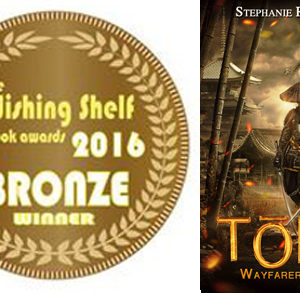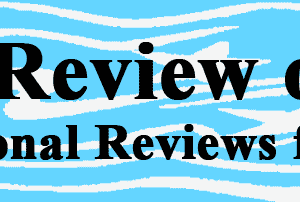 We appreciate the warm welcome at fellow author Deborah A Bailey’s blog for “Toru: Wayfarer Returns.” Deborah writes science fiction and paranormal romances with what sounds like a fair amount of heat!
We appreciate the warm welcome at fellow author Deborah A Bailey’s blog for “Toru: Wayfarer Returns.” Deborah writes science fiction and paranormal romances with what sounds like a fair amount of heat!
Our guest post on Deborah’s site featured more musings about genre, steampunk and why I needed to blend alternate history, historical fiction, steampunk and fantasy to tell the story my characters wanted me to tell. There is also an excerpt featuring everyone’s favorite character, the impertinent Jiro, on the day he wins the right to be test pilot for the first dirigible.
Below I’ve included the Guest Post and Excerpt as they appeared on Deborah’s great blog.
Guest Post
“The Making of an Alternate History Steampunk Technofantasy Writer” by Stephanie R. Sorensen
So…I have failed as a writer on the most basic piece of advice budding writers are given, which is to pick a genre and make sure you deliver against genre expectations.
Oops.
I didn’t mean to screw up so badly.
I will freely admit I meant to write a steampunk novel (Action! Adventure! Romance! Cool outfits! Dirigibles!), but it kind of meandered out of the lines and scooped up heavy doses of historical fiction (Real people from history doing cool stuff! Culture! History!) and a bit of fantasy of the technofantasy variety (flying dirigibles! Submarines in 1850! an industrial revolution in about 18 months, or about twenty times faster than is really possible!!! Wheee!). Then I altered the history, which gets you into alternate history (the world as it might have been! But wasn’t!).
Call it four genres, and discover you have made trouble with a capital “T” for yourself as a writer. Advice to fellow writers—don’t do this kind of genre-blending, as it annoys readers when they wander into your story thinking it will be one thing and then you serve them something else.
And yet….
I’d do it the same way all over again and write the same story, even knowing there would be grumpy readers out there. Why? Because the story I told is a story with characters I love and is a story I could only tell by borrowing elements from all those genres and putting them together in a new way.
I love steampunk novels, and the way they let us visit a time when elegance and manners held sway, versus the coarseness and informality of our daily life today. Steampunk also remakes the past into a better past, “better” by today’s moral and ethical standards, like more equality and less slavery. Let’s be real—if you were a woman of any race or class or a person of a non-white race in the 19th century, like African slaves in the American South, or Asians and Middle-Easterners and Africans being “colonized” and “civilized” by the imperialist powers, your life basically sucked.
Steampunk novels have women and non-white people doing all the fun adventurous things that white males have always gotten to do, and steampunk characters get to right wrongs and do it while enjoying elegance and courtesy and cool outfits. I also enjoy how steampunk novels explore our human response to technology. The nineteenth century was the last time an ordinary person could look at and touch technology and understand how it might work without having a masters degree in some obscure kind of engineering. All these ingredients found their way into my story, even if it was not purely steampunk by the time I ended.
I also love history and historical fiction. When I set out to write a steampunk novel set in Japan, I knew Japanese history and culture might be alien and unfamiliar for many of my American readers. That meant I spent a lot of time building up a Japanese world that was truly Japanese, not whitewashed America in samurai drag. I knew I had to help the reader unfamiliar with Japan understand why Tōru’s mission was so life or death for the Japanese of that time.
The period I chose was as big a deal for Japan as our American Revolutionary War or the Civil War was for Americans, or the French Revolution for the French, when their entire nation changed from being one way to being entirely different. I couldn’t just have Tōru and his friends rushing around having random adventures in their dirigible against a Japanese backdrop—those adventures needed to mean something and have historical resonance.
Once I had put all the history and culture into the world-building, I found myself in alternate history territory, where I had to create a new history based on the changes the steampunk technology triggered. That’s why it is a series, for this first book only kicks off this revolutionary period in Japanese history and triggers a world where steampunk technologies make a difference to history. There is so much more to explore in the upcoming books, which I am working on now. I also wanted to show the incredible resilience and uniqueness of Japanese culture, how it absorbs changes and outside forces but renews those forces into a form uniquely and identifiably Japanese.
In the end, I was forced to blend steampunk with historical fiction with alternate history and a bit of fantastical technological handwaving to tell this story, of Japanese who must remake their nation overnight to save it from foreign invasion. Without the fantasy elements, on a larger time frame, it remains a true story, for that is the challenge the Japanese faced and rose to meet in real history, and it is an incredibly moving story. And even though my characters are fictional, they are, to the best of my humble ability, very Japanese and courageous and resilient in their devotion to their cause of saving their nation.
“Tōru: Wayfarer Returns” is not a classic steampunk adventure story, although it does have a bit of action and adventure, and romance and dirigibles. It’s also not historical fiction in the usual sense, although it is full of authentic culture and history. Finally, it’s more of a prequel to an alternate history, describing the moment where historical timelines divide and a new and alternate history can arise. For some readers, these are problems. To others, they are exactly what makes it much more than a mere steampunk adventure novel or a straightforward history.
To me as a writer, these were necessary ingredients to tell a story about a young man with a nation to save and everything to prove to an unobtainable woman he loves and an unreachable father he respects. This is Tōru’s story, and Japan’s story, no matter what genre it is. I hope you will enjoy it.
Excerpt
 “Rather than argue with them, you should invite them to make the first flight with you,” said Takamori. “At first they will agree, since it is their place as the leaders. Everyone is very excited about the dirigibles. Set the time and place for the first flight. Jiro should explain that is not a good time because of the wind or something technical that needs testing first. You argue with Jiro and perhaps even scold him for impertinence in front of the daimyōs.”
“Rather than argue with them, you should invite them to make the first flight with you,” said Takamori. “At first they will agree, since it is their place as the leaders. Everyone is very excited about the dirigibles. Set the time and place for the first flight. Jiro should explain that is not a good time because of the wind or something technical that needs testing first. You argue with Jiro and perhaps even scold him for impertinence in front of the daimyōs.”
“Yes, I am often scolded for impertinence,” said Jiro. “I have a talent for it, you know.”
“Indeed you do,” said Tōru. He saw where Takamori was going. “Then they notice the risks and uncertainties…and they ask me if it is safe. I tell them honestly that we have no idea if it is safe or if it will work, and that we might all crash to a fiery death and therefore perhaps I should test it first myself before we endanger them.”
“And I will be impertinent again and tell you in front of them that you don’t have a clue how to fly one of these dirijibi!” Jiro finished the plan for them. “Which is also true, by the way. I know how to fly one of these, and you don’t.”
“You’ve never flown one either,” protested Tōru.
“I have built one. Almost. Soon. How many have you built?” asked Jiro, with his broad grin.
Tōru opened his mouth and closed it again.
“See? Problem solved,” said Takamori, as he pounded Tōru on the back. “We have a fine dirijibi pilot, the finest dirijibi pilot in all of Japan, our good man Jiro here.”






Thanks for the mention, Stephanie! Good luck with the book tour!
Thanks! Good luck to you as well!